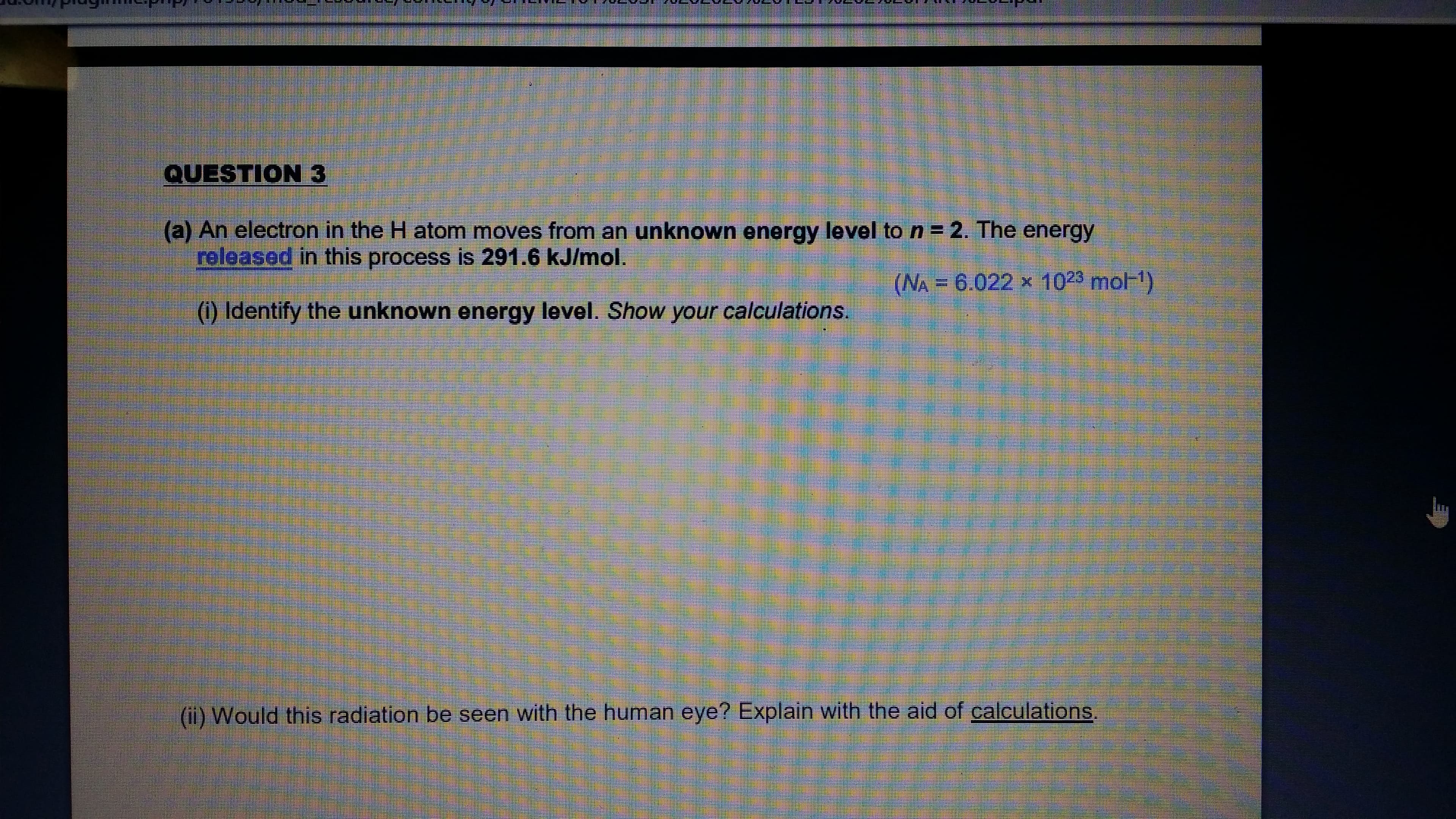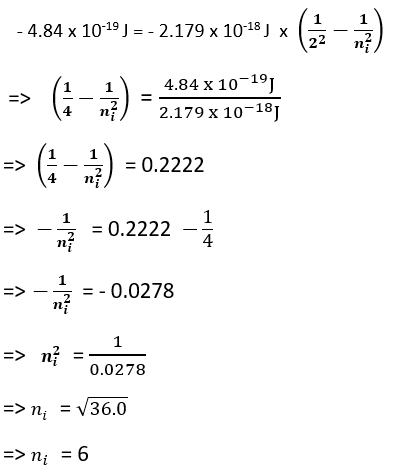An electron in the H atom moves from an unknown energy level to n= 2. The energy reloased in this process is 291.6 kJ/mol. (NA = 6.022 x 1023 moF) (1) Identify the unknown energy level. Show your calculations.
Atomic Structure
The basic structure of an atom is defined as the component-level of atomic structure of an atom. Precisely speaking an atom consists of three major subatomic particles which are protons, neutrons, and electrons. Many theories have been stated for explaining the structure of an atom.
Shape of the D Orbital
Shapes of orbitals are an approximate representation of boundaries in space for finding electrons occupied in that respective orbital. D orbitals are known to have a clover leaf shape or dumbbell inside where electrons can be found.

Energy released in the process of moving of electron from one energy level to another is given by,

Where, ∆E total energy released in the process in J
RH is a constant = 2.179 x 10-18 J
nf is final energy level
ni is the initial energy level.
Now, the energy given is expressed as per mole.
So, total energy released is = Energy released per mole / NA
= 291.6 kJ mol-1 / (6.022 x 1023 mol-1)
= 4.84 x 10-22 kJ
= 4.84 x 10-22 x 1000 J
= 4.84 x 10-19 J
Again, as energy is released by the system, so ∆E will be negative, i.e.
∆E = - 4.84 x 10-19 J
We have, nf = 2
Now, substituting the values in the above equation,

Therefore, the unknown energy level is n = 6 .
Step by step
Solved in 3 steps with 2 images









